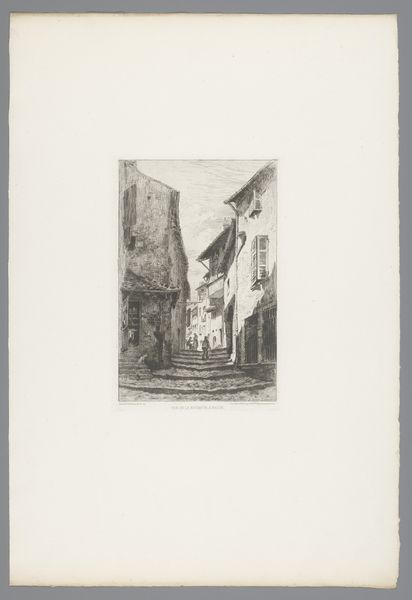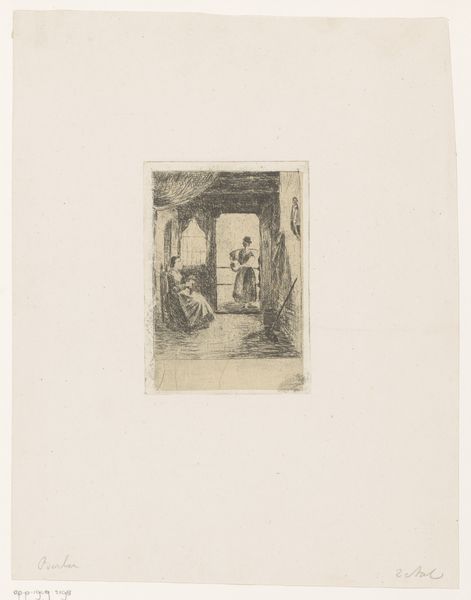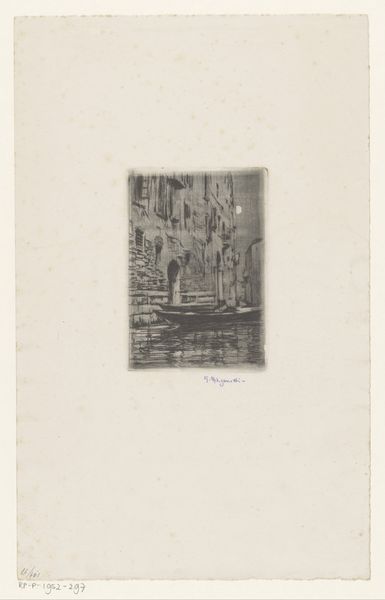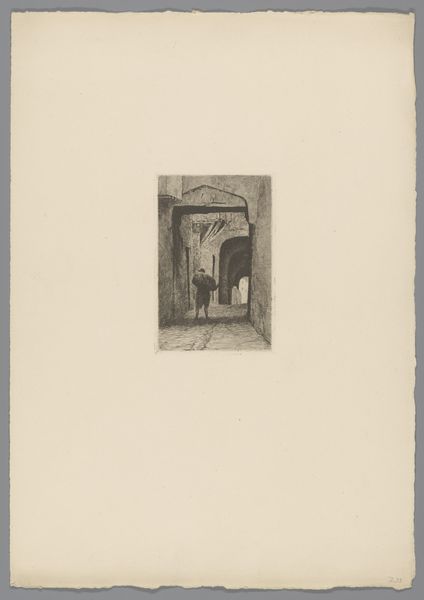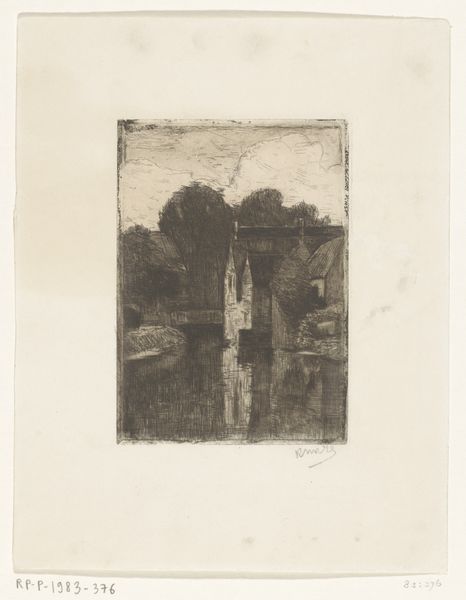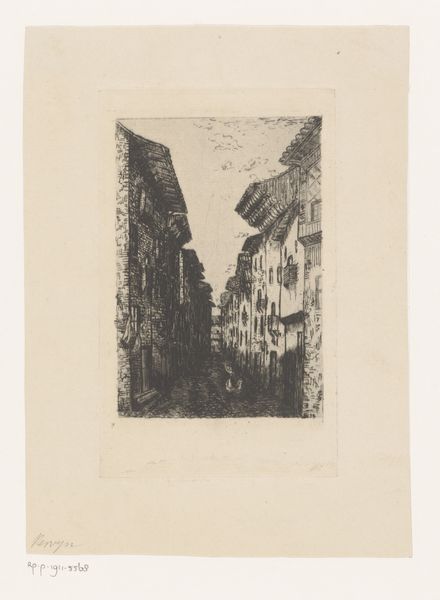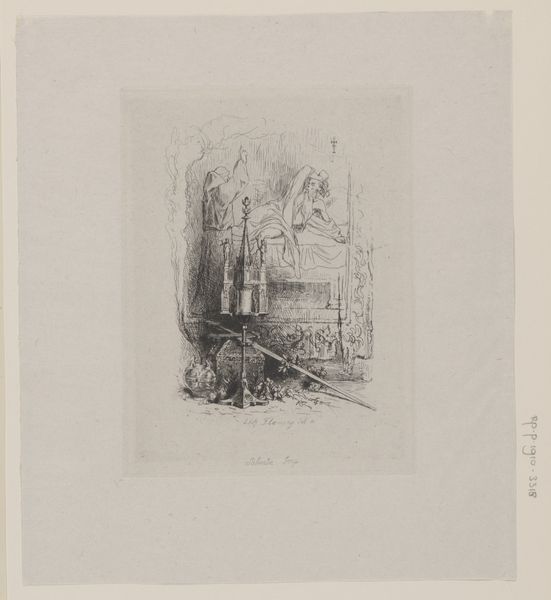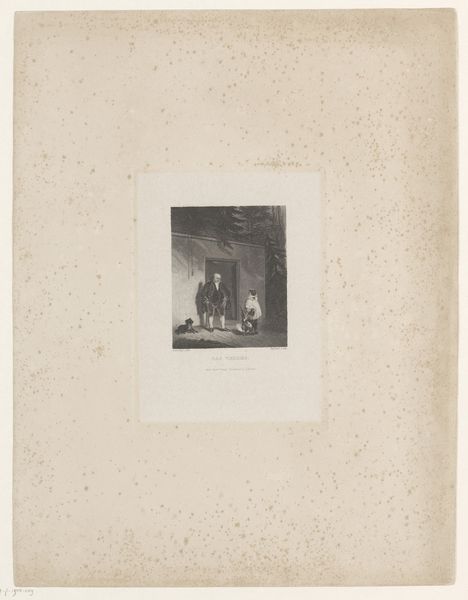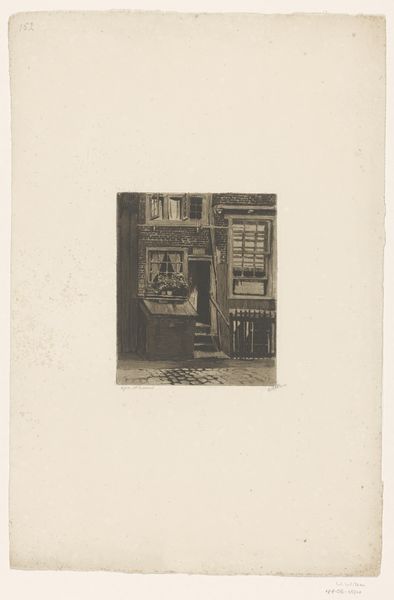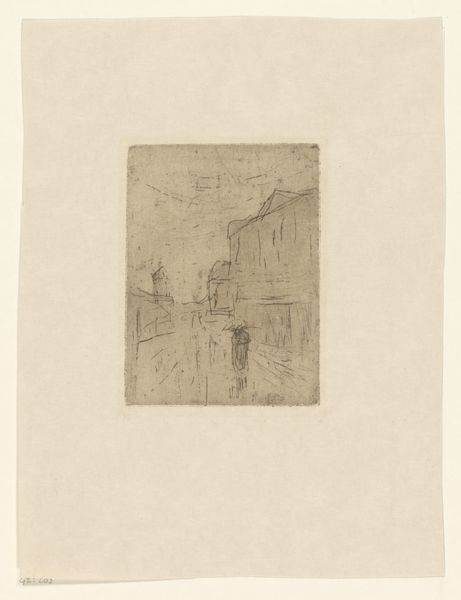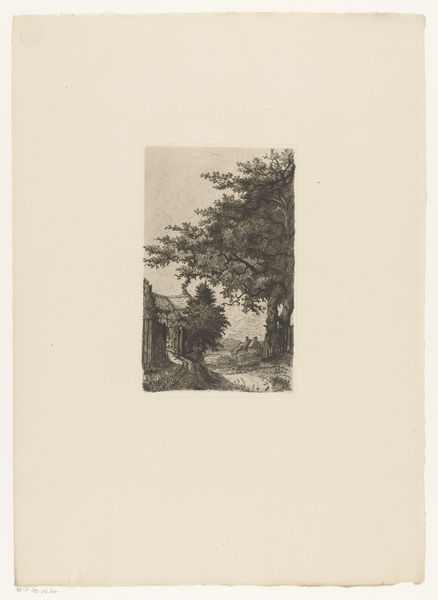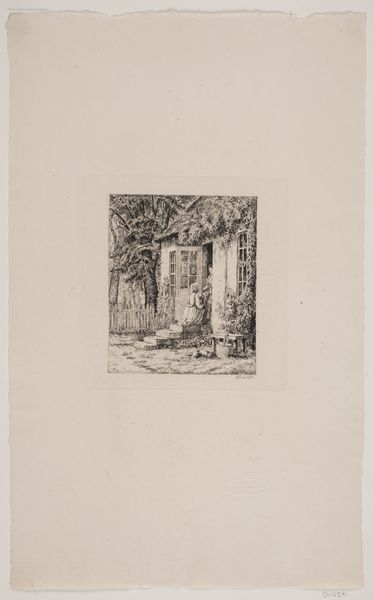
Dimensions: height 180 mm, width 84 mm
Copyright: Rijks Museum: Open Domain
Editor: This is Maxime Lalanne's "Straatzicht in Barcelona," made in 1863, using etching and ink on paper. I am struck by the density of the scene despite its diminutive scale. What captures your attention in this piece? Curator: I see a record of industrial capitalism transforming urban space. Lalanne's choice of etching, a relatively reproducible medium, hints at the democratization of art. How does the depicted street—its buildings, its implied inhabitants—reflect changing economic conditions? Editor: It looks like a very bustling, tight street, perhaps lower class. The buildings seem utilitarian, crammed together. Curator: Exactly. Consider the materials: ink, paper, etching plate. These are products of specific industries and labor practices. The very act of creating and distributing such an image makes it part of an economic cycle, documenting the transformation of Barcelona even as it participates in it. Editor: So you’re saying the *how* of its making is as significant as *what* it depicts? Curator: Precisely. This etching, and its potential for mass production, speaks volumes about access, consumption, and the evolving role of art in a society increasingly shaped by industrial forces. Think of it not just as a pretty scene, but as a document of—and a participant in—material culture. What did making this process achieve for the artist, and for the viewers? Editor: That definitely shifts my perspective. I was so focused on the Romanticism tag and visual details. Now I realize that understanding the materials and means of production adds another layer of meaning. Curator: Indeed. We moved away from the sole appreciation of artistic creation to how materiality impacts its significance.
Comments
No comments
Be the first to comment and join the conversation on the ultimate creative platform.
